Table of Contents
Fast Facts
- Giampaolo Dallara began his design career with jobs at Ferrari, Maserati, Lamborghini and De Tomaso. Although he was primarily interested in forging his career in racing car design and construction he was involved in the design of the Lamborghini Miura and Espada.
- Dallara started his own racing car building company in 1972 and within a few years had created Formula 3 cars that came to dominate competition in Italy, Germany, France, and Britain.
- Although Dallara did not experience great success in Formula 1 they did in the American Indy Car competitions becoming a dominant force.
- Dallara’s Indy cars began with the 1997 IR-7, and in 1998 gained an Indianapolis 500 win for Eddie Cheever in a V8 Oldsmobile powered IR-7, with another win in 1999 for an IR-9 driven by Kenny Bräck.
- The most successful of Dallara’s Indy car chassis was the IR-03 which debuted in 2003, and was improved to become the IR-05 in 2007.
- Dallara are still making racing cars and have also branched out to create a sports car.
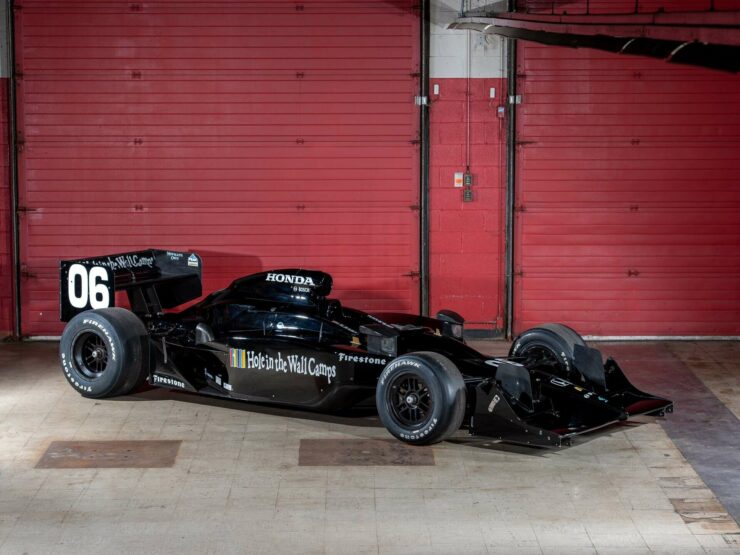

Giampaolo Dallara graduated from the Milan Polytechnic and joined Ferrari in 1960. He moved on to Maserati in 1962 and to Lamborghini in 1963 where he became chief designer. So in three short years he’d gone from university graduation, with a major in aeronautical engineering, to being chief designer in a challenging position in a new and highly creative high performance automobile manufacturer.
It was at Lamborghini that Giampaolo Dallara found himself on a team with famous engineers Paolo Stanzani, and Bob Wallace, and working on a “pet project for the three men, a transverse mid-engine GT powered by a Giotto Bizzarrini designed 3.9 litre V12. The owner of Lamborghini was not initially keen on the idea so the three engineers worked on the project in their own time, which can be a great opportunity to get to know people and to learn from each other.
When Ferruccio Lamborghini finally looked at the prototype chassis he approved and so the rolling chassis was shown at the Turin Salon of 1965. To his surprise orders started coming in and so Lamborghini commissioned Marcello Gandini of Italian design house Bertone to do the body style. The Lamborghini Miura was born and became one of the most famous and desirable cars of its era.


Dallara’s work prior to moving to Lamborghini had primarily been on racing car chassis: at Ferrari he had worked with Giulio Alfieri who was the technical manager for the racing department, and at Maserati he had worked designing the chassis for racing cars.
Ferruccio Lamborghini had no interest in racing, and in 1969 when Dallara left Lamborghini it was to move to De Tomaso where he worked on a novel chassis for a Formula 2 car, which was so successful that the design inspired the chassis for the De Tomaso Formula 1 car.
Dallara made the big break in 1972 and set up his own business to specialize in his first love – racing cars: hence his company was named Dallara Automobili da Competizione.
Giampaolo Dallara’s new company created chassis for various forms of motorsport including sports car racing and hillclimbs, and in a consultancy role in the creation of the 1973 Williams Formula 1 car. Dallara became the constructor for the BMS Scuderia Italia Formula 1 racing team from 1988-1992, and created a chassis for Honda to trial for their proposed return to Formula 1 in 1999: Honda ultimately decided against a return to Formula 1 at that time.
His major success however was in his design and making of a Formula 3 racing car chassis which made its debut in 1981. That chassis built a formidable reputation in Dallara’s home country with a string of Formula 3 championship wins.


Dallara became a Formula 3 force to be reckoned with beginning in 1993 with the introduction of the Dallara F393 chassis (i.e. Formula 3 of 1993). This chassis achieved near dominance in Formula 3 in Italy, France, Britain and Germany, and in the Macau Grand Prix.
In Formula 1 Dallara worked for a couple of teams in campaigns, notably for the cash strapped Hispania team, that did not produce any startling successes. Dallara would not be involved in Formula 1 again until April of 2014 when Gene Haas (not to be confused with Carl Haas of Newman Haas Racing) began his own Formula 1 team and he entered into a partnership with Dallara to build his first car. This was the Haas VF-16 Formula 1 car and it made its debut in February 2016.
Moving back to 1997 however, having not had any outstanding success in the ethereal atmosphere of Formula 1, Giampaolo Dallara decided to move into the world of Indy racing and try his hand in that wildly exciting world of power and speed liberally laced with American V8 engines and colourful personalities.
Dallara began supplying chassis for the Indy Series competition teams in 1997 with his IR-7 model. This remained the base design around which his subsequent IR-8 and IR-9 updated models were based.
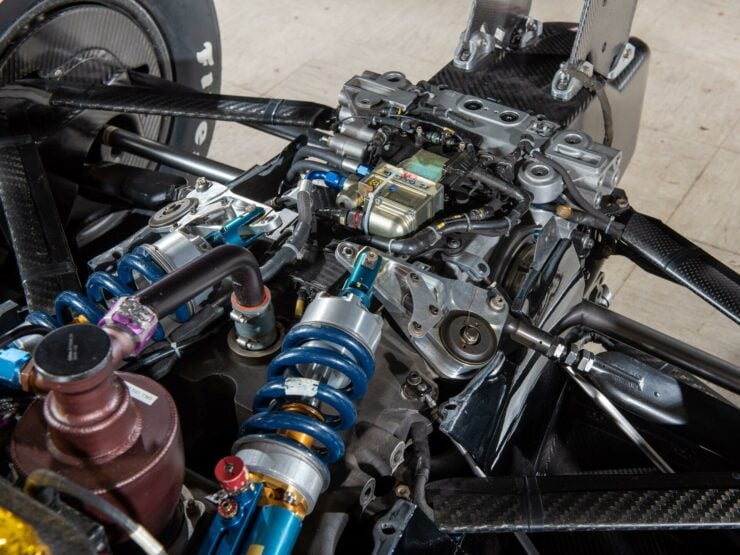

The successes were rather immediate for Dallara in Indy Series racing with an Indianapolis 500 win for Eddie Cheever in a V8 Oldsmobile powered IR-7 in 1998, and another win in 1999 for an IR-9 driven by Kenny Bräck.
Dallara created a new second generation chassis for the new millennium, the first of the new series named the IR-00 (for the year 2000), and followed on with a third generation chassis design in 2003 – hence it was called the IR-03.
The IR-03 was built using a carbon fiber monocoque body/chassis and was equipped with double-wishbone pull-rod-actuated suspension. It was superseded by the updated IR-05 in 2007, which was essentially an upgrade kit for the IR-03.
The IR-05 introduced fitting for paddle-actuated gear selectors on the steering wheel, revised aerodynamic fittings to adapt the car to different circuit types, from city street tracks to high speed ovals. The IR-03/IR-05 chassis also had the means to change the wheelbase of the car to adapt it for different race environments.
Dallara IR-05 Chassis #001
The #001 Dallara IR-05 was purchased by the Newman/Haas Indy Car racing team for the 2008 season, a season that marked a historic turning point for Indy Car racing because the Indy Car and Champ Car competition re-united after a twelve year schism.
For the 2008 competition the Newman/Haas/Lanigan racing team decided on Graham Rahal as their second driver. Paul Newman was a man who liked to help young drivers get a decent start on their motor racing careers and so Newman/Haas Racing had a history of providing that sort of support for drivers they thought showed strong promise.
Graham Rahal was the son of Bobby Rahal, who had been an Indianapolis 500 winner and three times CART (Championship Auto Racing Teams) champion. Despite his young age he had already stacked up significant race experience having cut his teeth in Formula Atlantic racing, and gone on to the 24 Hours Daytona and the 12 Hours of Sebring American Le Mans Series in 2007.
Graham Rahal’s first success of the 2008 season was a win in the Honda Grand Prix of St. Petersburg, the Dallara IR-05 being fitted with a Honda racing V8 engine. At the age of 19 years, 93 days he was the youngest driver to win a major American road race.
The Dallara IR-05 that Graham Rahal drove to victory is coming up for sale by RM Sotheby’s on 29th October 2022 as a part of the sale of the Newman/Haas collection of racing cars.
You will find the sale page for the 2008 chassis #001 Dallara-Honda IR-05 with further details if you click here.


On the side of the car you will see advertising for the “Hole in the Wall Camps”. The Hole in the Wall Gang camps were created by Paul Newman for children dealing with serious health problems. The camps continue to this day and you’ll find the website here.
Giampaolo Dallara’s company exists today producing racing cars for Indy Car, Indy Lights, FIA Formula 2 and 3, Super Formula, Super Formula Lights, Euro Formula Open, ELMS, NASCAR, and IMSA Weathertech Sportscar.
Dallara also produce their own rather interesting looking road going sports car the Dallara Stradale which you’ll find on their home page.











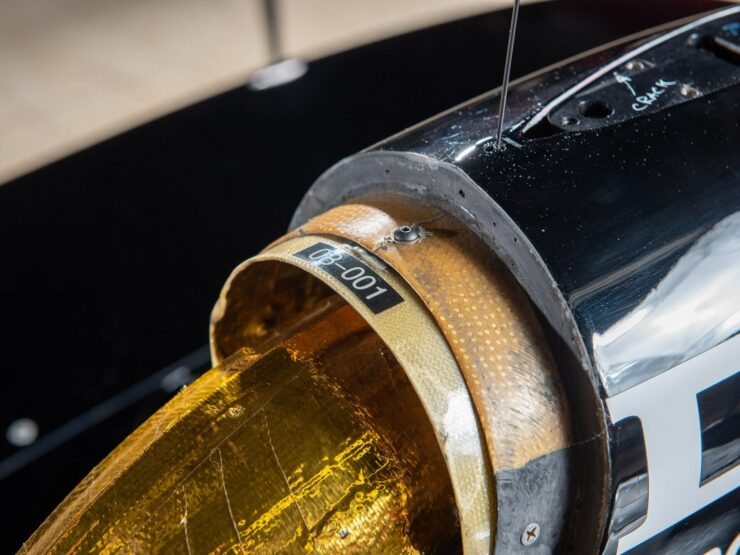




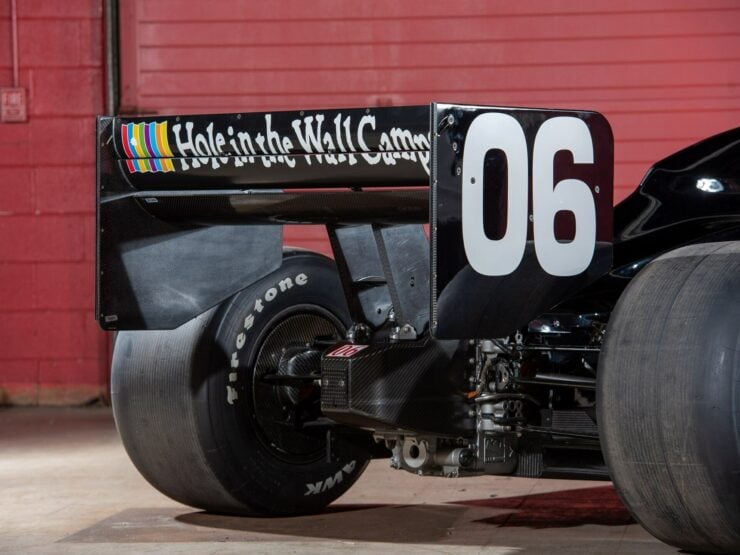
























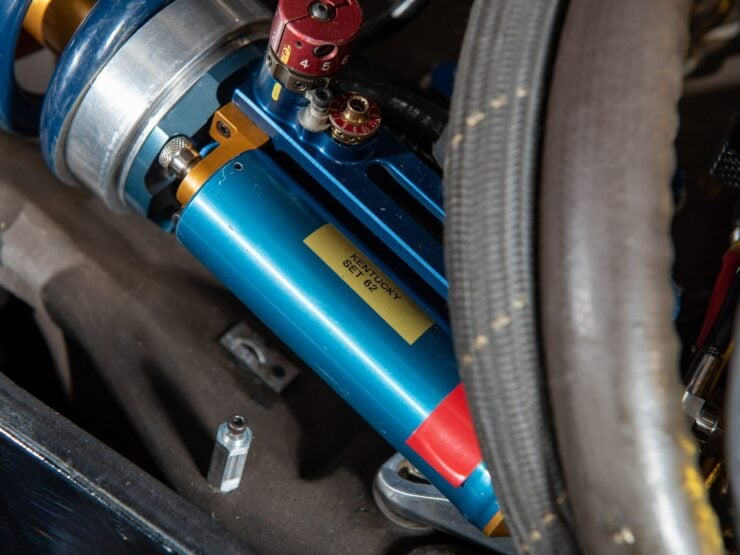

Photo Credits: All pictures of the Dallara IR-05 Chassis #001 courtesy RM Sotheby’s.

Jon Branch has written countless official automobile Buying Guides for eBay Motors over the years, he’s also written for Hagerty, he’s a long time contributor to Silodrome and the official SSAA Magazine, and he’s the founder and senior editor of Revivaler.
Jon has done radio, television, magazine, and newspaper interviews on various issues, and has traveled extensively, having lived in Britain, Australia, China, and Hong Kong. The fastest thing he’s ever driven was a Bolwell Nagari, the slowest was a Caterpillar D9, and the most challenging was a 1950’s MAN semi-trailer with unexpected brake failure.

